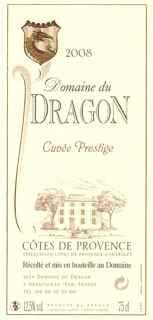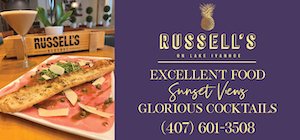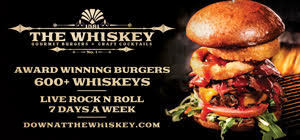Now is the perfect time to think about something different for this holiday weekend. Even though the summer solstice is a few weeks away to signal the official start of summer, the heat has arrived here in Central Florida and I think it’s time to pull the cork or twist open a bottle of chilled rosé. Mind you, I’m talking about a more serious style of the blush category, not necessarily the $ 7.99 bottle, off- dry pink stuff (not that there’s anything wrong with that).
I would like to introduce the blush style that screams fruit, acid, hints of minerality and above all, balance. In the U.S. the term blush is used to call out the pale pink wine category and it’s a term overused, commonly misrepresenting the full potential of discovery beyond the off- dry white zinfandel craze.
The term rosé comes from France where many would argue the finest expressions originate in a drier style, especially in the Southern Rhone and  Mediterranean. I would have to agree that in the Southern part of France the blush wines from Provence and Southern Rhone (Tavel) highlight the expressions that commonly reveal diverse and delicious identities. When I was on my honeymoon, my wife, Deb, and I toured the town of Nice and stopped by the local outdoor market to buy a fresh baguette, sliced proscuitto with gruyere and locally grown olives. We came across a small wine shop and I bought a chilled bottle of local rosé and we picnicked on the beach. Although the memory of that moment was special, it was that wine that still echoes my allure — and appreciation — for Provençal rosé.
Mediterranean. I would have to agree that in the Southern part of France the blush wines from Provence and Southern Rhone (Tavel) highlight the expressions that commonly reveal diverse and delicious identities. When I was on my honeymoon, my wife, Deb, and I toured the town of Nice and stopped by the local outdoor market to buy a fresh baguette, sliced proscuitto with gruyere and locally grown olives. We came across a small wine shop and I bought a chilled bottle of local rosé and we picnicked on the beach. Although the memory of that moment was special, it was that wine that still echoes my allure — and appreciation — for Provençal rosé.
Further north in the Loire valley of France one can also find top rosé styles from Anjou of various sweetness levels. The term rosado is commonly used when calling out the pink styles from Spain especially originating from Navarre. The phenomenon of dry rosé originally hit our shores with brands from Portugal such as Lancer’s and Mateus. If you remember these then you’re revealing your age. And it is definitely time to tune up your impressions. Higher quality rosé seldom garners the attention and respect amongs U.S. consumers because for the most part these wines get typecast into the generic blush category and aren’t taken seriously, perhaps until now.
The production for rosé can be from one of three methods. The most common is skin contact from any red grape. After the grapes are crushed the skins are left to remain in contact (maceration) with the juice for a short period of time to extract the required color intensity. The longer the juice remains on the skins will result is more intense flavor and darker color.
If you study wine then you you’re familiar with the second method and term saignée, which is a technique commonly used for higher quality production. The pink juice is drawn off from a large container or vat at an early stage of red wine production prior to fermentation. As a result the remaining red wine left to ferment becomes more concentrated with increased maceration from the reduction in volume. The pink juice is then fermented separately to produce the rosé.
The last method is simply blending white and red juice together, however this is not the most favored for quality and often used for producing the sweeter pink plunk. In terms of grape selection any red grape is eligible, however the varietals from Southern Rhone have captured the essence of classic rosé style, i.e. Grenache, Syrah, Cinsault, Mouvedre, Carignan. Often blended together, these grapes provide a unique aromatic and spicy tone to the bright red fruit flavors marked with acidity and refreshing minerality. The rosé style is not exclusive to southern France as noted in delicious examples which use same grape varieties to produce examples specifically from Australia, Oregon, Argentina and California.
So treat yourself to a new discovery this weekend with something different. Treat rosé as a chilled white wine and try it with your grilled or BBQ favorites. Cheeses are a natural pair affinity as well. Hot dogs with spicy mustard also can do the trick, but leave off the sauerkraut.
Here are some local favorites to check out :
Tim Varan, CWE, owner of Tim’s Wine Market, recommends :
Fun, Picnic Style –
08 Château Grand Cassagne, Costières de Nîmes, France ($10)
…fresh raspberries and watermelon notes, generous impression of fruit
07 Forte Canto Rose, Apulia, Italy ($10)
…based on the Negroamaro grape, spicy nose of black licorice, cherry juice and fresh sage.
08 Chateau de Campuget, Costières de Nîmes, France ($12)
..notes of strawberries, peaches with hints of minerals and herbs
Serious Stuff –
Domaine du Dragon “Cuvee Prestige”, Cotes de Provence, France ($16)
…fresh strawberries and raspberries with notes of thyme and bay leaf, long finish
Stringtown Rose ($18), Oregon
…blend of Grenache and Syrah showcases dried cherries, bay leaf and jasmine, big style
Tim’s Wine Market
1223 North Orange Ave.
Orlando 407-895-9463 –
Windemere 407-876-9463
Lakeland 863-644-8181
St. Augustine Beach 904-461-0060
Eric Cooperman, Winebuyer for Gran Cru suggests:
07 Fuastino Rosato, Rioja, Spain ($12.99)
06 Adelsheim Vineyards Rose of Pinot Noir, Willamette Valley, Oregon ($18.50)
06 Yangarra Estate Rose of Shiraz/Grenache, McLaren Vale, Australia ($18.99)
07 Storybrook Mountain Vineyards Zin Gris, Napa Valley, CA ($19.99)
Gran Cru Wine Shop
7730 West Sand Lake Road
Orlando
407-226-3322
Happy Memorial Day & Cheers,
John Blazon MS










